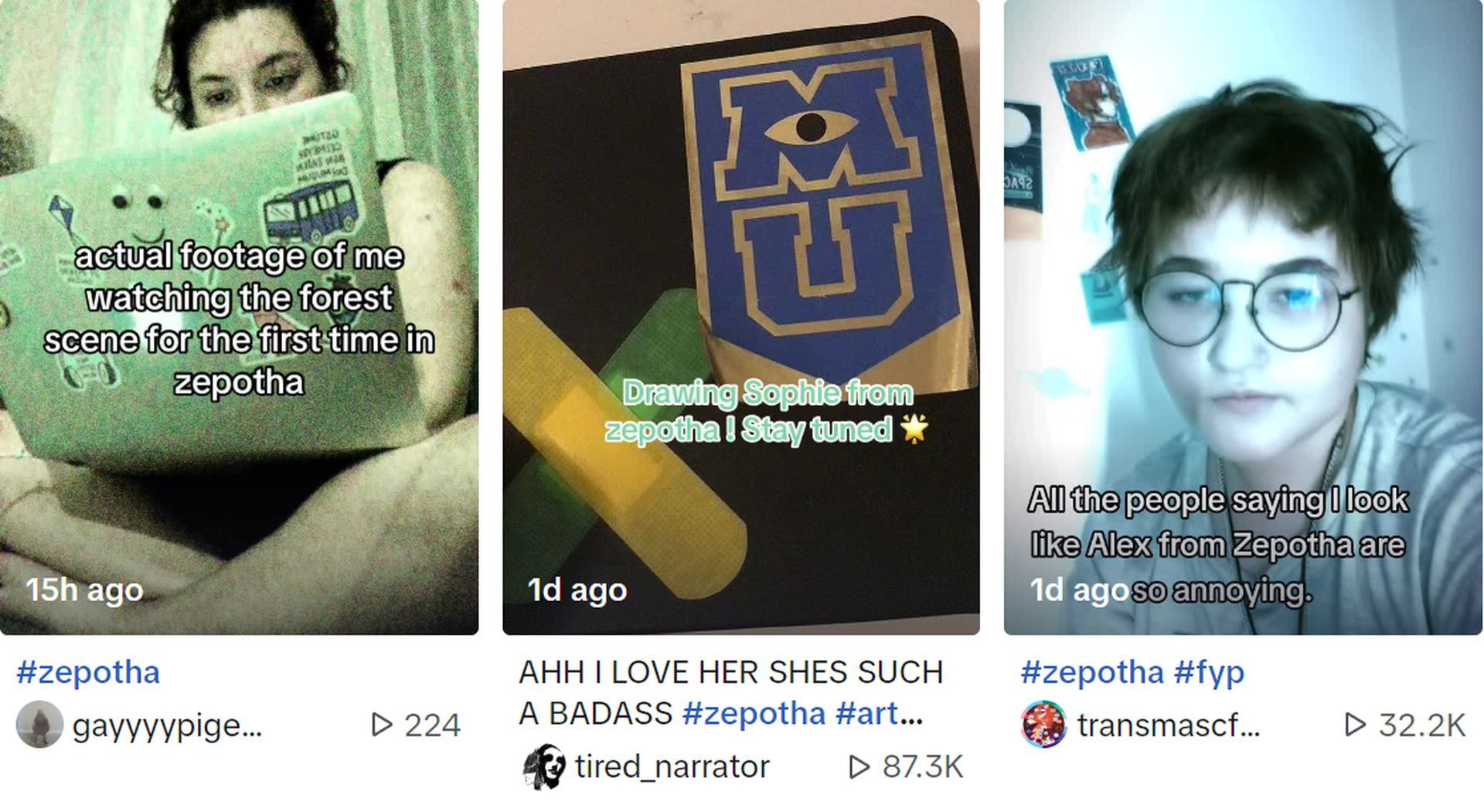In an era where reality and the virtual realm intertwine, the Zepotha movie TikTok trend has emerged as a compelling example of the potential pitfalls of online belief systems.
Amidst the vast expanse of interconnected networks, the Zepotha fabrication stands as a stark reminder of the imperative to exercise critical judgment when navigating the digital landscape.

The illusion of the Zepotha movie
The virtual halls of TikTok have become host to a captivating phenomenon—the Zepotha movie, an alleged horror masterpiece from 1987, has taken the platform by storm. Enticing users to explore the world of Zepotha, a series of comments declaring “You look like ….. from Zepotha” have paved the way for a unique experiment in digital gullibility.
Behind the Zepotha illusion lies the ingenuity of content creator Emily Jeffri. With an audacious vision, she proposed a novel social experiment—to conjure a non-existent 80s horror film, Zepotha, and populate the virtual realm with comments forging connections between users and fictional characters. The outcome was astonishing, with an evolving narrative unfolding before the eyes of thousands:
OK, so new bit idea: what if we created a fake 80s horror movie called ‘Zepotha’ and started commenting ‘omg u look exactly like that one girl from Zepotha’ or ‘wait, u look exactly like ____ from Zepotha’ on every thirst trap we see. Together we will witness new lore develop, main characters will emerge, etc. & we can convince thousands of people that this weirdly titled 80s horror film actually exists.
@emilyjeffri anyway maxine defender until i die, deserved to be with alaine omg #zepotha #80s #nostalgia #horrormovie #80shorror #horror
How the Zepotha movie took a flight into fame
Emily’s creation swiftly gained momentum, amassing a staggering 3.6 million views within an astonishingly short span. This viral ascent catapulted the Zepotha movie trend to unforeseen heights, demonstrating the swift and expansive influence of the digital age. Yet, beneath the amusement lies a disconcerting reality—the rampant propagation of falsehoods in an era of interconnectedness.

The Zepotha ruse shines a light on the burgeoning challenge of misinformation in our digitally driven world. Social media platforms, initially hailed as vehicles of information sharing, have inadvertently turned into breeding grounds for falsehoods. The Zepotha phenomenon underscores the ease with which unfounded claims infiltrate the collective consciousness, leaving a trail of bewilderment in their wake. Emily herself seems to regret the creation of the sensation in their last video:
@emilyjeffri POST THIS VID IN THE DISTRACTIBLE SUBREDDIT I BEG YOU the way i would burst into tears and then burst into flames and combust and explode, the man raised me okay i am not taking any chances big cooperations would be using this to sell clothes or something but i just want to talk to my childhood hero for a few seconds that is literally all i need PLEASE also his mum follows me on instagram so that is another reason for you guys to listen to my music btw (i love you sunok thank you for drawing me that one time) @markiplier #zepotha #80s #nostalgia #horrormovie #80shorror #horror #spooky
Amid this information landscape, a symbiotic relationship between users and platforms emerges—one wherein vigilance and discernment play vital roles. Users must cultivate a critical eye, scrutinizing sources, fact-checking assertions, and employing critical thinking in the face of persuasive language. Concurrently, social media platforms bear the responsibility of moderating content without stifling freedom of expression. Meanwhile, many users have displayed their confusion in the face of the trend.
@alyssamckayyy my anxiety is peaking rn wtf is zapotha
Be prepared for future Zepothas
As digital pilgrims embark on a virtual journey, armed with smartphones and social media profiles, the Zepotha movie TikTok trend implores us to embrace the power of skepticism. In a realm where deceptive narratives flourish, the quest for authenticity becomes a shared mission—one that defines the very essence of our digital coexistence. Amid the cacophony of falsehoods, the pursuit of truth stands as an unwavering anthem, echoing through the corridors of the digital age. There are a few things to make sure to keep in mind:
- Credibility assessment: Before you hit the “share” button, take a moment to gauge the reliability of the source. Investigate both the author’s background and the source’s reputation, and cross-reference the information with established and trustworthy outlets.
- Critical thought: When engaging with content, exercise discernment. Scrutinize the text for potential red flags, such as exaggerated language, absence of citations, or an overabundance of emotional appeals. Misinformation often exploits our emotions; the antidote is vigilant critical thinking.
- Unveiling the Truth: Harness the power of fact-checking tools and websites to authenticate claims. A swift online search can swiftly uncover the truth and dismantle falsehoods, safeguarding the integrity of information.
- Embracing diverse viewpoints: Seek out a spectrum of sources and perspectives on a given subject. Gaining insights from various angles enriches your understanding, facilitating a more nuanced and accurate grasp of the topic at hand.

Meanwhile, as a really recent example of why you should take the news on social media with a grain of salt, check out how Jason Aldean’s voice was generated with AI in a TikTok trend.
Featured image credit: Eyestetix Studio / Unsplash





